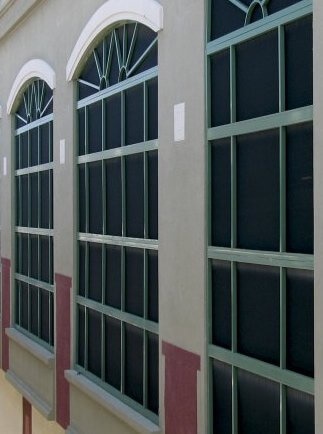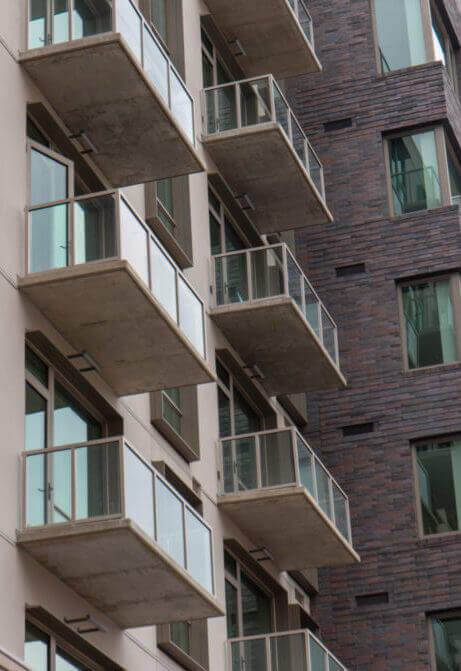Glass railing looks sleek and provides an unobstructed view when used on many different types of architectural applications. However, no matter how structurally sound the mounting hardware or framing members might be, the glass itself can pose serious life safety risks if an incorrect glass type is used.
Read more to learn when not to use non-laminated, tempered-only glass.
In order to properly explain the instances in which non-laminated glass poses a significant risk, let’s first discuss the differences between laminated, non-laminated and tempered glass.
Laminated Glass is created when two or more sheets of glass are bonded together with an interlayer, to create a single sheet of glass. When damaged, the interlayer prevents the glass from completely breaking apart.
Non-Laminated Glass does not have the extra layer of bonding and, therefore, nothing is present to prevent the glass from breaking apart.
Tempered Glass is glass that is heated or treated chemically to increase its strength. When broken, this type of glass separates into granular chunks instead of sharp shards. Both laminated and non-laminated glass are always tempered for architectural railing applications.
With glass railings in particular, point-mounted glass railing systems and railings with compression clips should always include laminated glass. “Point-mounted” means that the glass is mounted to the posts and/or structure using through-glass hardware. When through-glass hardware is used, holes must be cut into the glass. This process creates weakened areas in/on the edges of non-laminated/tempered-only glass, making the glass more likely to vacate the space in high impact areas.
Although priced lower, tempered-only, non-laminated glass can be extremely edge-sensitive and create dangerous situations in a variety of public venues and commercial spaces.
If safety is your #1 concern, you can never go wrong with tempered, laminated glass panels for your architectural railing.
To learn more about glass railing for architectural applications, CLICK HERE.



























